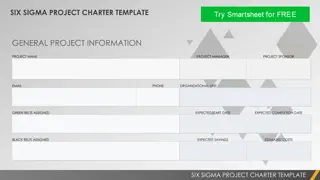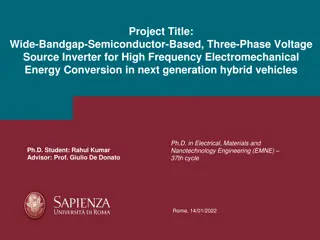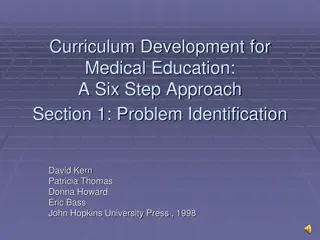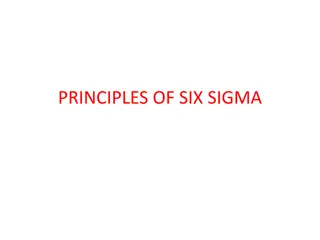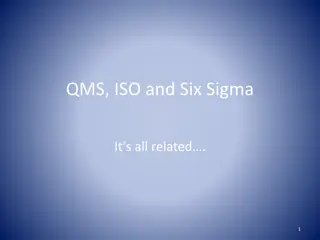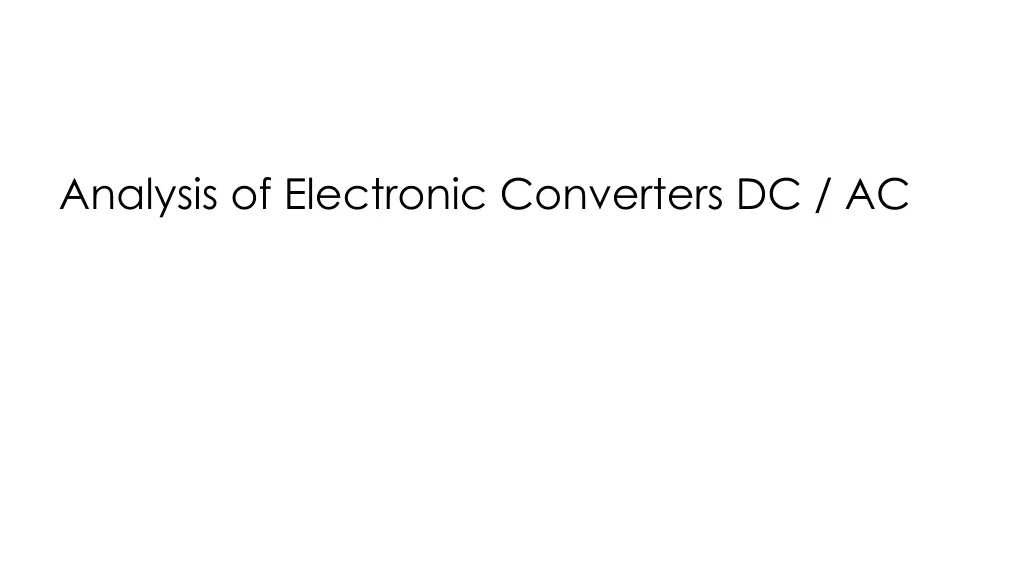
Analysis of Electronic Converters DC/AC: Harmonic Component Analysis for Voltage Source Inverter
Explore the harmonic component analysis for a Voltage Source Inverter (VSI) supplying three-phase loads, calculating phase-to-neutral and phase-to-phase voltages. Understand the six-step method for creating three-phase output voltage and analyze line-to-line and line-to-neutral voltages. Various conduction scenarios and corresponding voltage outputs are detailed in this comprehensive analysis.
Download Presentation

Please find below an Image/Link to download the presentation.
The content on the website is provided AS IS for your information and personal use only. It may not be sold, licensed, or shared on other websites without obtaining consent from the author. If you encounter any issues during the download, it is possible that the publisher has removed the file from their server.
You are allowed to download the files provided on this website for personal or commercial use, subject to the condition that they are used lawfully. All files are the property of their respective owners.
The content on the website is provided AS IS for your information and personal use only. It may not be sold, licensed, or shared on other websites without obtaining consent from the author.
E N D
Presentation Transcript
Task: For a Voltage Source Inverter (VSI) which supplies symmetrical three-phase loads of star wiring and the conduction interval of each switching element is 180 calculate the harmonic component analysis for both the phase to neutral and the phase to phase voltage of this converter. Fig. 1 Three-phase voltage source inverter.
Solution: In this converter the simplest method of creating a three phase output voltage is the six step one. In this method we have a new conducting switching element every 60 and every switching element conducts for a time period of 180 . Through this consecutive conduction of the 6 switching elements a rough sinusoidal waveform is produced at the output. Because of that the output waveform is enriched with a variety of harmonic components. Fig. 2 Waveforms of gating signals, switching sequence, line to negative voltages for six-step voltage source inverter.
Solution: In this converter there are two types of voltages depending on the reference of them: Line to line voltages (Vab, Vbc, Vca) called polar voltage: Vab = VaN - VbN Vbc = VbN - VcN Vca = VcN - VaN Line to neutral voltages (Van, Vbn, Vcn) called phase voltage: Van = 2/3VaN - 1/3VbN - 1/3VcN Vbn = -1/3VaN + 2/3VbN - 1/3VcN Vcn = -1/3VaN - 1/3VbN + 2/3VcN Fig. 3 Waveforms of line to neutral (phase) voltages and line to line voltages for six-step voltage source inverter.
Solution: For 561 conduction The Phase to Neutral Voltages are: The Phase to Phase Voltages are:
Solution: For 612 conduction The Phase to Neutral Voltages are: The Phase to Phase Voltages are:
Solution: For 123 conduction The Phase to Neutral Voltages are: The Phase to Phase Voltages are:
Solution: For 234 conduction The Phase to Neutral Voltages are: The Phase to Phase Voltages are:
Solution: For 345 conduction The Phase to Neutral Voltages are: The Phase to Phase Voltages are:
Solution: For 456 conduction The Phase to Neutral Voltages are: The Phase to Phase Voltages are:
Solution: The Fourier series of line-to-line voltages: Where Vab,n is the amplitude of Vab:
Solution: Finally the line-to-line voltages:
Solution: The output voltage amplitude for the first 21 harmonics: n=1 n=5 n=7 n=11 n=13 n=17 n=19 Vab,1= 623.75V Vab,5= 124.75V Vab,7= 89.1V Vab,11= 56.7V Vab,13= 48V Vab,17= 36.7V Vab,19= 32.8V For the rest of them between 1 and 21 the voltage amplitude is 0V. = = 400 2 565.68 Vdc V The amplitudes were calculated with which is the output voltage of a 3-phase rectifier. The amplitudes for Vab, Vbc and Vca are the same. The phases of them are simply 120 apart between of waveforms.
Solution: The load phase voltages can be replaced with the Fourier series: Where VaNis the amplitude of vaN:
Solution: Finally the load phase voltages are:
Solution: It s worth mentioning that due to the lack of the neutral connection the third and the multiples of the third harmonic are not existing. Also due to the 90 -symmetry there is also lack of the even harmonics in the output voltage of this converter.
Thank you for your attention!











